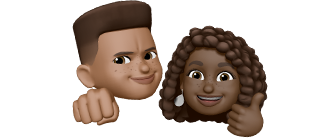By Idicula Mathew
After learning about the success Bugs Bunny had in inventing The Original Carrot Peeler, Daffy Duck steals an idea straight from Bug’s Invention Ideas Book. He proceeds to prototype, build and set up shop to sell his new product: The Automatic Carrot Peeler. He quickly realizes he has little luck selling this trendy new product. Although the Automatic Carrot Peeler initially seems superior to the original, he discovers that potential customers would never use it. Nobody but a rabbit would need to peel that many carrots - not enough to justify the cost of the thing, Bugs explains to Daffy.
This Looney Tunes episode, Peel of Fortune, was the first thing one of my business advisors showed me to exemplify the importance of Customer Discovery.
Coming from a research and engineering background, my first instinct is to start rapid prototyping, building out solutions and new products. Although this approach may be beneficial for new research publications, I’ve learned that commercialization is a different ball game. To commercialize a new technology, it needs to start and end with the customer. Three years ago, when our biomedical research team approached a business professor with a prototype novel drug delivery implant system, he challenged us to interview at least 100 potential customers. Albeit reluctantly at first, our team at Hera Health Solutions set out on our first customer discovery journey by setting up phone calls and interviews with real people that work with implantable technologies. What we initially anticipated to be trivial turned out to be highly beneficial and significant. Our team even had the opportunity to learn from and engage in conversations with other startups across industries through our participation in the immersive and supportive Communitas Ventures program this past year. We were blown away by the new insights into what was crucial to the customer.
Over 500 conversations later, we realized we had to reformulate a brand-new product. From implant length to drug solution content to packaging, we redesigned our technology completely to fit the needs vocalized by the physicians, clinicians, and ultimately the end users. Our discussions with our manufacturer were detail-oriented, primarily focusing on the elements of the tensile strength, viscosity, sterilization, and other metrics of the final product, all before we signed off on an extended study. These long discussions often led to internal arguments. A light bulb went off for our team: instead of making assumptions about the product needs, let’s confirm which modifications are important to the customer.
From there, we referred to the previous customer interviews and set out on another customer journey that allowed us to fine tune our findings and better navigate the manufacturing journey. Although initially more time consuming, we ultimately were more confident in the final version of our flagship product Eucontra™ which is now undergoing trials for FDA approval. From this process, we truly realized that our team’s customer discovery journey is far from over. It is an iterative process to continually communicate, listen, and learn from the voice of our end user. Personally, as an engineer and entrepreneur, I see it as an honor to have the opportunity to be co-working with our team and partners on building innovative and essential solutions for our customers – unlike the Automatic Carrot Peeler.
Idicula Mathew is an alum of Communitas Ventures Accelerator Program Cohort 6, recipient of the Communitas America Sustainable Innovation Award, and CEO & Co-Founder of Hera Health Solutions. Visit www.herahealthsolutions.com to learn more about their innovative work in developing biodegradable drug delivery implants.
- share
- Copy to URL
